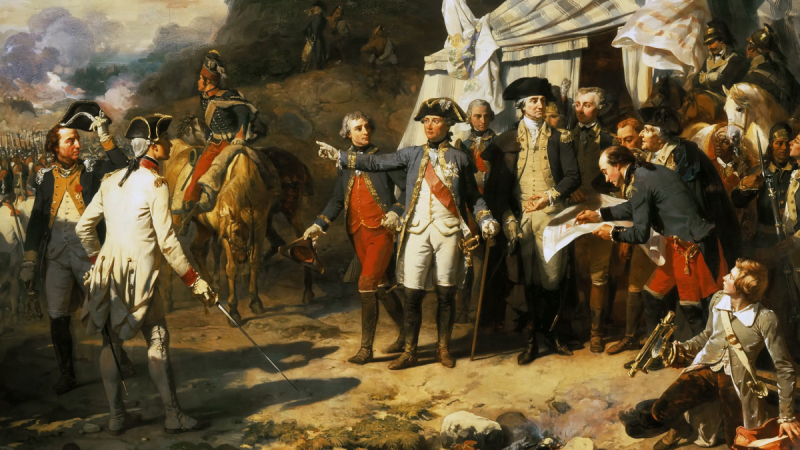Siege of Yorktown
The Siege of Yorktown, also known as the Battle of Yorktown, the Yorktown surrender, or the German battle (due to the presence of Germans in all three armies), took place in Yorktown, Virginia, from September 28, 1781, to October 19, 1781. It was a decisive victory by a combined force of American Continental Army troops led by General George Washington and Gilbert du Motier, Marquis de Lafayette, and French Army troops led by Comte de Rochambeau over British Armored.
The American army and its French allies gathered near New York City on July 6, 1781. On August 19, 3000 American troops led by George Washington and 4000 French troops led by Comte de Rochambeau marched from Newport, Rhode Island, to Yorktown, Virginia. During this well-publicized march, Washington sends out forged messages to fool British Commander-in-Chief Henry Clinton into thinking his army was about to assault New York. This persuaded Clinton that Lord Cornwallis's position at Yorktown was secure. On September 28, Washington completed the encirclement of Yorktown, launching the siege against a British force of 9,000 men.
Cornwallis raised the white flag on October 17 after being bombarded nonstop by Franco-American forces, with little chance of reinforcements and insufficient artillery ammunition and food. The siege took place over 20 days. There were 88 Franco-Americans dead and 301 injured. The British lost 156 troops, 326 were wounded, and 70 were missing during the battle. More crucially, Cornwallis' whole surviving army of over 7,000 men had to be surrendered. The Siege of Yorktown was the American Revolutionary War's final significant engagement. It compelled the British to negotiate a cease-fire.
Date: September 28 – October 19, 1781













